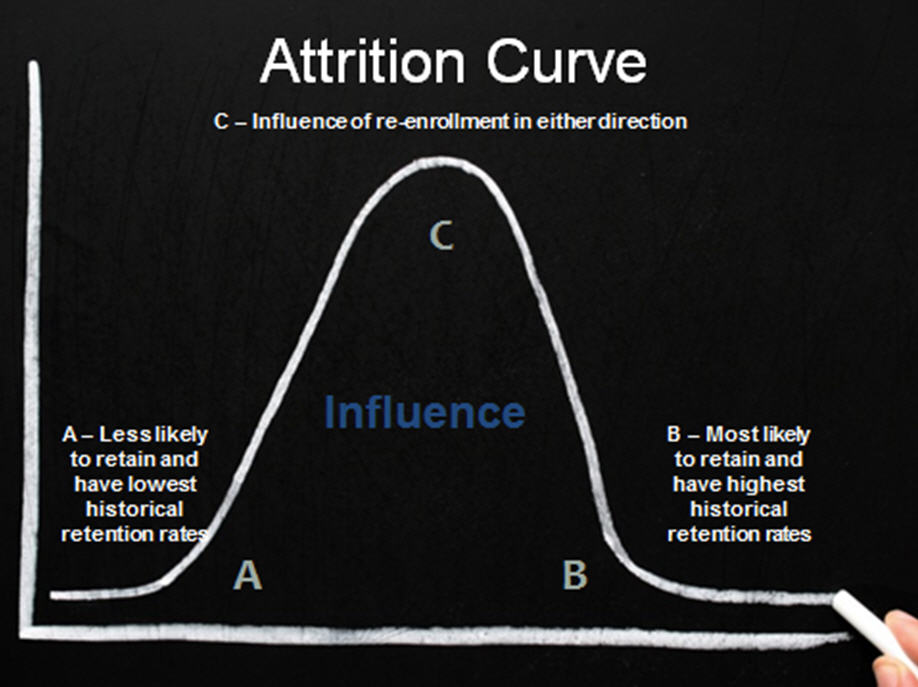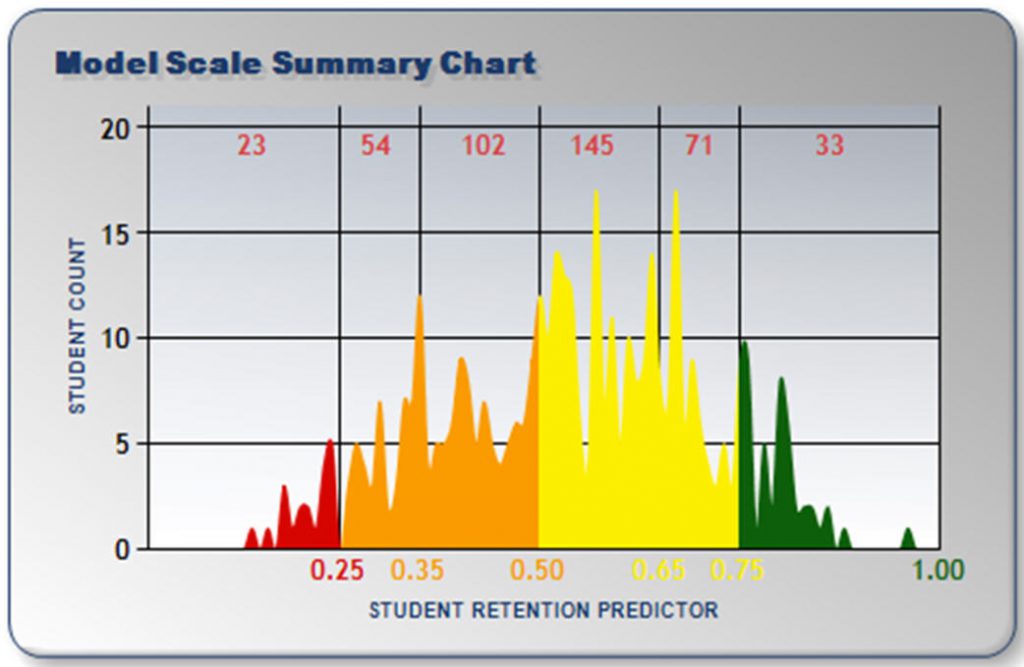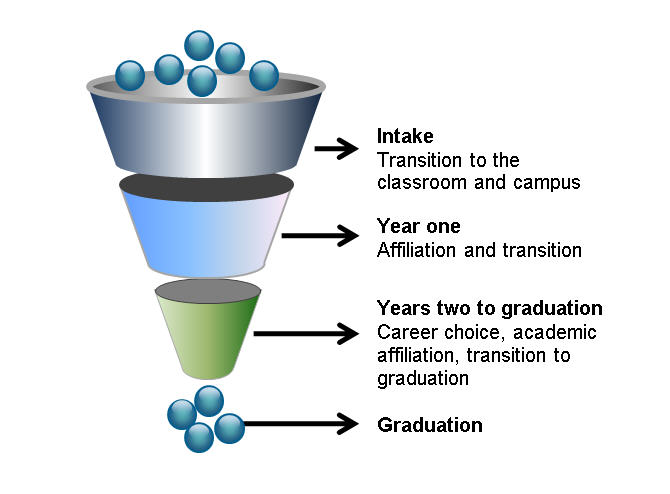student success
How are you “managing” student success?
Since the last time I wrote about “managing” student success (see my previous posts on the topic here and here), I’ve heard some feedback about this concept that I would like to share with you. I heard a couple of people say they didn’t really like the word “managing” because it is counter to student development theory that says we should meet students where they are and help them to get to a state where they can be successful. Another person said we should be focusing on engagement of students during all time periods of the student experience, which will facilitate student success. But I think no matter what words we use or how we describe retention planning, we need to make sure that we have a framework and the data to better inform our strategies.
With that in mind, let’s talk about two necessary and fundamental components in your retention planning efforts.
Your attrition curve and a student success relationship management and completion planning framework
The attrition curve is a distribution of a student’s likelihood to retain to the second year at your college. For example, we know that not everyone will retain and we also know that some students will leave no matter what we do or will stay no matter what we do. If we apply the concept of a normal distribution, then it might mean about one-quarter of students will leave no matter what we do, one-quarter will stay no matter what, and the remaining half might be influenced by our efforts. Here is an example of an attrition curve.

Historical analysis can help you to determine which of your students fall into tail A, B, or area C. If you don’t have this type of analysis, I recommend trying it out and seeing what a difference it can make in targeting your retention efforts.
This attrition curve guides how Noel-Levitz uses predictive modeling to assess the likelihood of students persisting. We take existing enrollment data to build a persistence model, then apply it to individual students, who receive scores from .01 (will withdraw no matter what) to .99 (will persist no matter what). Here’s an example of how this works:

Those red numbers at the top represent the numbers of students in each band. So, in the green area, 33 students are most likely to be retained, whereas the 23 in the red are the least likely to persist. Based on what I have seen at many campuses, I would guess that most of you are spending the abundance of your resources on those two groups. While I don’t mean to imply that you should ignore them, your focus should be more on your “middle children” in the orange and yellow areas. There are many more of them and they are more likely to be influenced by your retention efforts.
Applying the attrition curve to your planning framework
While the attrition curve is fundamental, applying it to a planning framework is just as crucial. The student success relationship management model and completion planning framework provide the foundation for effective efforts designed to improve retention and graduation rates. It is imperative for a campus community to understand the success lifecycle of the student as he or she enters the pathway to graduation and moves toward completion. An example model is provided below. Note that there can be many variations of this model depending on the institutional type, structures, practices, and culture. For example, my two-year college friends would have to partition this funnel a little differently, but the general approach should still work.
What does this all mean for your retention efforts?
Your first step is to develop a retention planning framework that fits your institution per the guidelines above. Please don’t get hung up on the labels I’ve used for the stages in the model above. I would ask you to think about the periods of time when you are attempting to create student success strategies and why those periods of time are so important as the student transitions. For example, my two-year college friends might envision a framework divided into semesters or terms rather than years. In the same vein, technical program students at a two-year school might have a different framework versus a student whose intent is transfer. In my experience, the variations on the above will apply to just about any four-year school. (If you don’t think so, please e-mail me and let me know. Feel free to share your framework and I’ll include it in my next blog for others to see.)
Once you have a draft framework for planning, then you’ll need to answer these questions.
- What is in your current “inventory” of strategies during each time period?
- Which strategies are or are not working during each time period?
- Do you need new strategies during each time period?
- Who is/will be responsible for strategies during each period of time in question?
- What are the performance indicators that you are trying to manage during the same time periods?
Keep the attrition curve in mind as you answer these questions. That tool will allow you to best manage the time period during the first two terms of enrollment. For example, if we know the curve above, then our communication, outreach, and intervention plans can be tailored to the red, orange, yellow, and green areas. We can set goals for each of the areas and develop strategies to accomplish the goals. If the normal retention rate in the red area is 35 percent, then we should not expect dramatic increases within that area. If normal retention rates are 65 percent within the yellow areas then we can set goals to increase that range and also determine what resources are needed to accomplish the goals.
I’m always interested to learn what you think and what approaches and tools you use on your campuses. If you want to share and start a discussion forum, please make a comment or e-mail me and let’s continue this conversation. I want to wish you all well as you continue to prepare for fall start-up.
